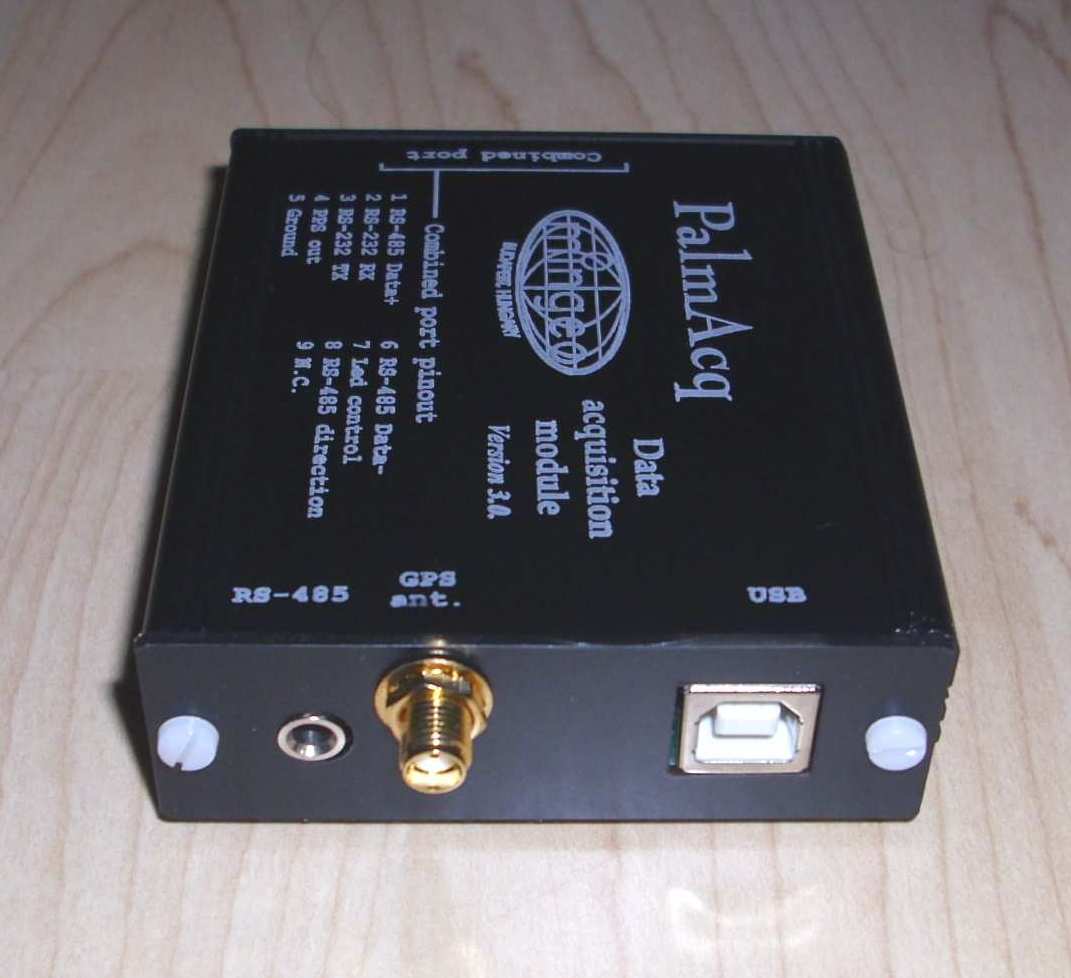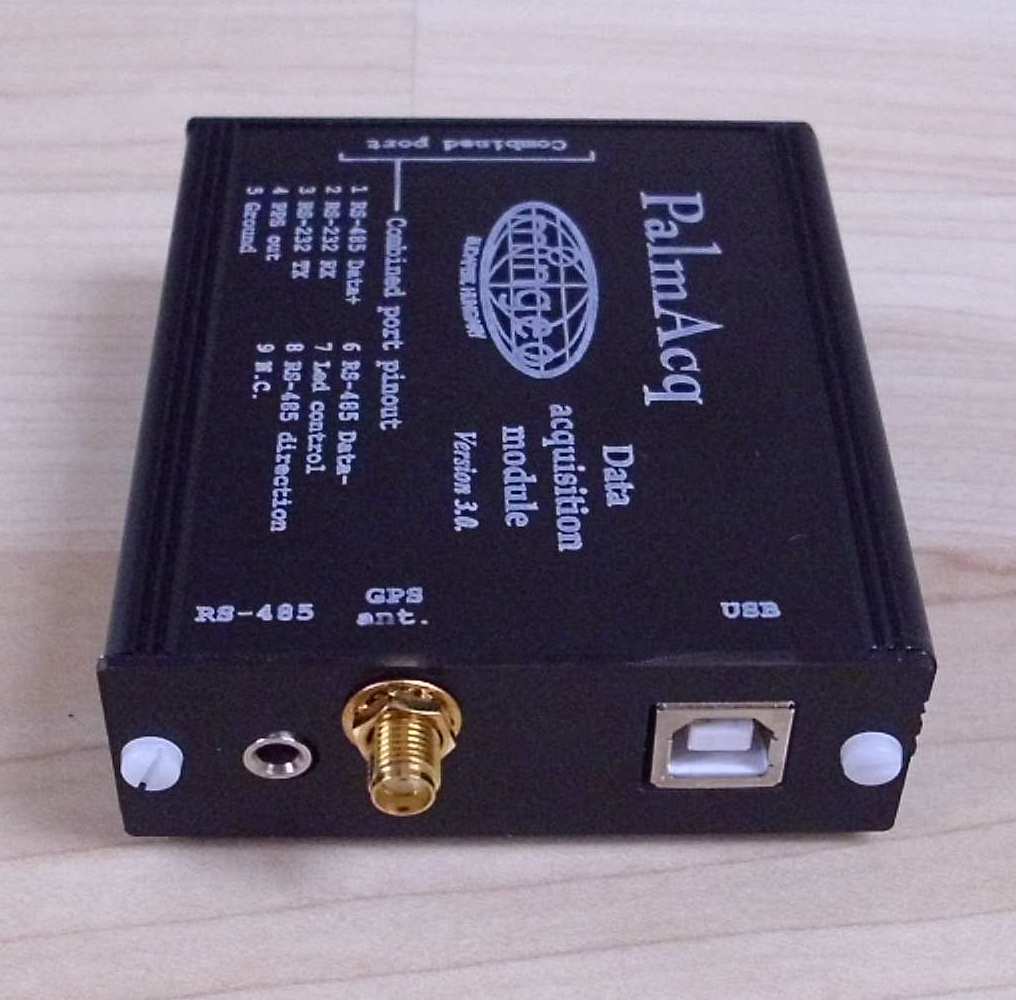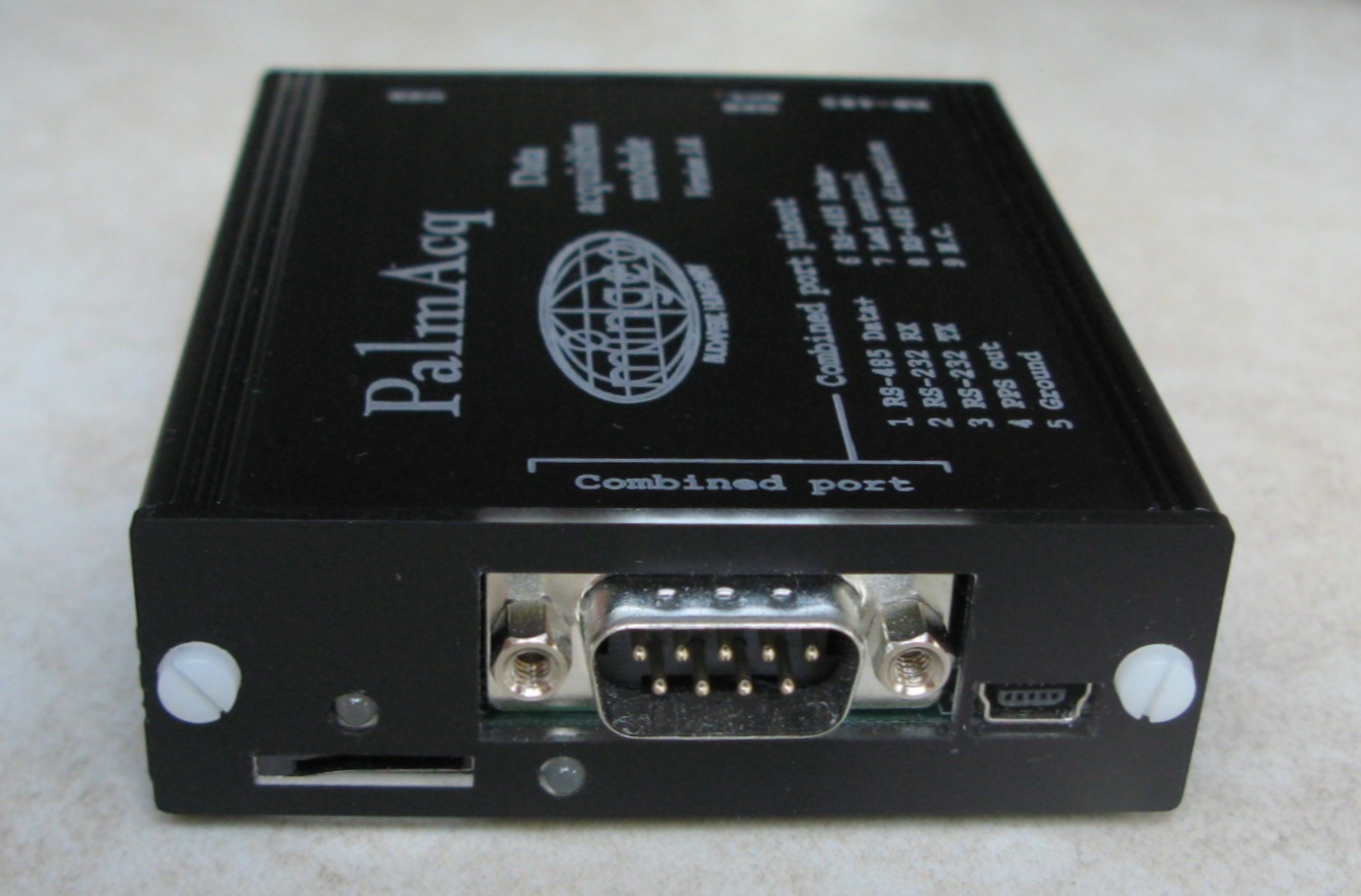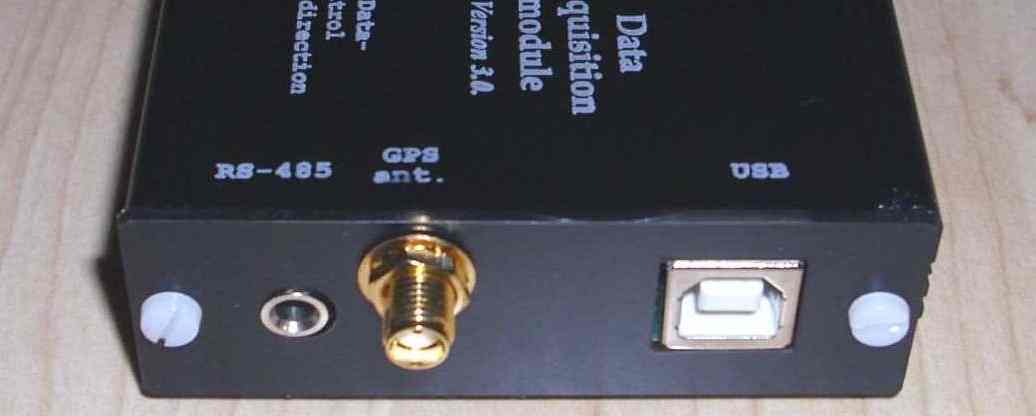Data acquisition module with GPS/GNSS synchronzied clock

PalmAcq is a small data acquisition module designed primarily (but not exclusively) for geomagnetic observatories to facilitate high timing accuracy data acquisition from one or more instruments. PalmAcq can be used in two ways:
- As an interfacing module between the sampled instrument(s) and a host data acquisition computer, to realize high timing accuracy real-time sampling on non real-time operating systems;
- As a stand-alone small-size data acquisition module, suitable for long term battery powered operation. Data are saved into MicroSD memory card.
PalmAcq can be controlled and programmed through its main port, that can be either USB or RS-232 type. By default it has has one RS-232 and one RS-485 port to connect to the sampled instruments. Some other I/O ports are also available, that can be used also as additional serial port. It has a built-in GPS/GNSS receiver with Pulse-Per-Second (PPS) signal. This GPS/GNSS module is primarly used for high accuracy time label determination, but of course, the positioning data are also avaible in mobile applications.
PalmAcq is designed for simultaneous acquisition from fluxgate and proton magnetometers with high timing accuracy.
Hardware feautres:
- USB (or RS-232) port to connect to a host computer
- One isolated RS-485 port (called as R-Port) for connecting one or more instruments
- One RS-232 port (called as M-Port) for connecting one instrument
- Built-in NMEA GPS/GNSS receiver supplying UTC time and position. The module supports concurrent reception of GPS/QZSS, GLONASS and BeiDou satellites.
- GPS-PPS signal output (TTL level, CMOS compatible, programmable pulse width), to trigger A/D converters
- Two layouts: boxed version and panel version
- MicroSD card socket (on boxed versions)
Main software features:
- Communication with the host computer using ASCII format commands and responses
- Reception and time stamping of instruments data coming on R-Port and M-Port, buffering and/or forwarding time stamped data to the host computer
- Time stamping is based on the GPS module's supplied UTC time, format of time stamps is adjustable. Time stamps accuracy is approx. ±1 ms.
- The built-in GPS outputted NMEA records and PPS events can be buffered, saved and/or forwarded to the host computer
- Transparent mode to establish virtually a direct connection between the host computer and the instruments, connected to R-Port and M-Port. Transparent mode can also be used to connect to the built-in NMEA GPS and to use PalmAcq as a GPS module.
- Memory buffer for temporary storage of time stamped data (to overcome USB port or host computer's latency in case of high data rates)
- Sending out data request commands or data with time stamps at programmable intervals and programmable sequences to R-Port, M-Port and/or to the host computer, with high timing accuracy
- Programmable power-on self configuration
- Logging received messages (data records) and GPS records into MicroSD memory card
Power supply:
- PalmAcq connecting to host computer through USB port is supplied by the USB port's bus power, separate power supply is not needed.
Average power consumption is approximately 120 mA @ 5V. During start-up time the power consumption is temporary higher.
PalmAcq is to be considered as a high-power USB device. It may not start from low-power USB ports (like from bus powered USB hubs). - PalmAcq connecting to host computer through RS-232 port requires 9...18 VDC power. Power consumption is approximately 1 Watt.
Magrec-4C computer has built-in PalmAcq module


